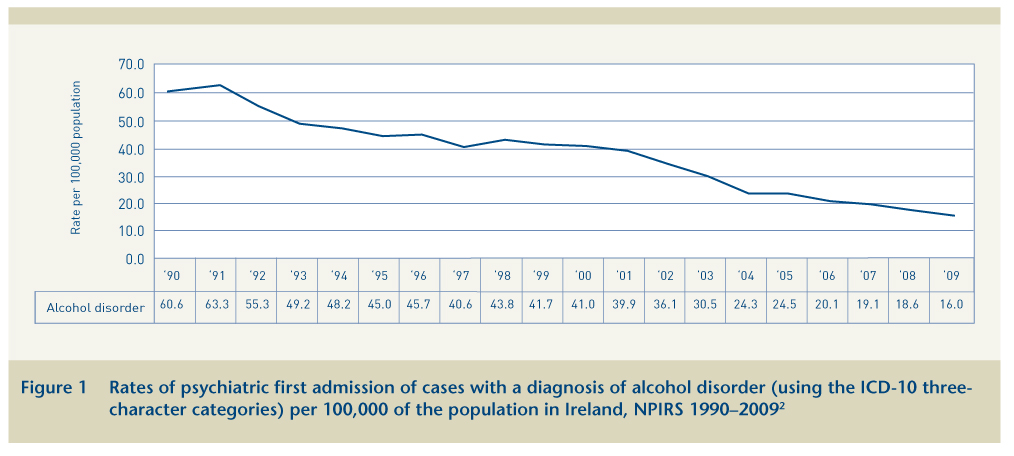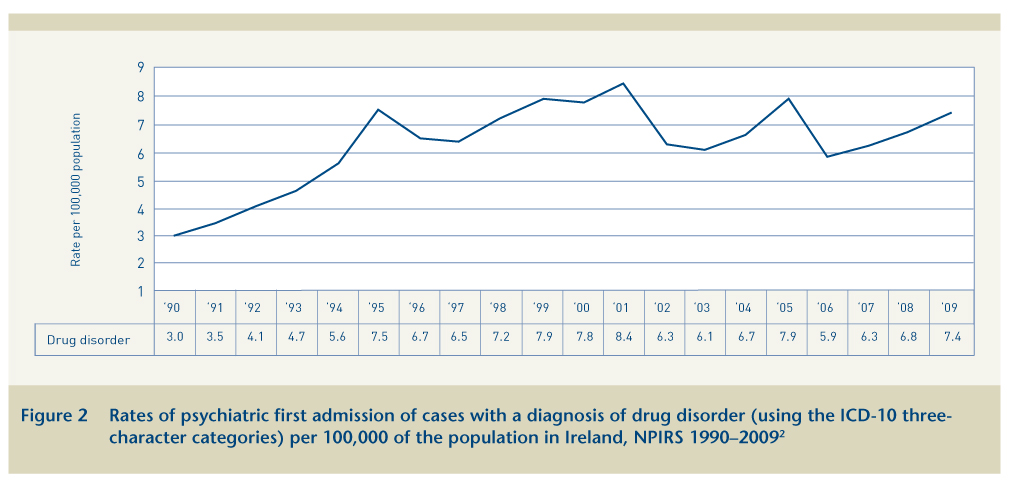Long, Jean (2011) Trends in alcohol and drug admissions to psychiatric facilities. Drugnet Ireland, Issue 37, Spring 2011, pp. 16-17.
| Preview | Title | Contact |
|---|---|---|
|
PDF (Drugnet Ireland, issue 37)
- Published Version
795kB |
Activities of Irish psychiatric units and hospitals 2009,the annual report published by the Mental Health Information Systems Unit of the Health Research Board in December 2010, shows that the total number of admissions to inpatient care has continued to fall.1


In 2009, 824 cases were admitted to psychiatric facilities with a drug disorder, of whom 313 were treated for the first time.The report does not present data on drug use and psychiatric co-morbidity, so it is not possible to determine whether or not these admissions were appropriate. Figure 2 presents the rates of first admission between 1990 and 2009 of cases with a diagnosis of drug disorder.The rate was almost three times higher in 2001 than it was in 1990. Notable dips in the rate occur in the census years 1996, 2002 and 2006, and can be partly explained by the increased population figures used as the denominator in calculating the rate for those years.
1. Daly A and Walsh D (2010) Activities of Irish psychiatric units and hospitals 2009: main findings. HRB Statistics Series 9. Dublin: Health Research Board. www.hrb.ie/publications/hrb-publication/publications//535/
2. Annual reports from the National Psychiatric In-patient Reporting System (NPIRS) for the years 1990 to 2009 are available on the Health Research Board website at www.hrb.ie/publications/mental-health
J Health care, prevention, harm reduction and treatment > Type of care > Mental health care (Psychiatry / Psychology)
VA Geographic area > Europe > Ireland
G Health and disease > Substance related disorder > Substance related mental health disorder
Repository Staff Only: item control page